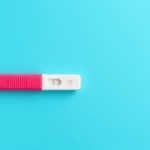Understanding the Difference Between Period and Implantation Bleeding
When it comes to understanding women’s health, distinguishing between period and implantation bleeding is vital. Many women experience some form of vaginal bleeding during their reproductive years, which is usually linked to menstrual cycles or possible pregnancies. Menstrual bleeding often occurs monthly in a predictable cycle, marking the shedding of the uterine lining. Implantation bleeding, on the other hand, is a lighter spotting that may occur when a fertilized egg attaches to the uterine wall, typically around days 6 to 12 post-ovulation.
This misleadingly simple definition leads to many misconceptions. For women trying to conceive, recognizing the subtle differences between these types of bleeding may help in realizing early signs of pregnancy. Therefore, understanding the nuances of these two types of bleeding can significantly inform one’s reproductive health decisions.
What is Menstrual Bleeding?
Menstrual bleeding, or menstruation, is a natural part of many women’s reproductive health. This process usually occurs monthly and can vary significantly from woman to woman. During this cycle, the ovaries produce hormones that cause the uterus to thicken in preparation for a potential pregnancy. If no fertilization occurs, these hormone levels drop, leading to the shedding of the uterine lining, marked by menstrual bleeding. This generally lasts from three to seven days and can involve various symptoms including cramping and mood swings.
Every woman’s menstrual cycle is unique, with some experiencing heavier flows while others may have lighter periods. Factors such as stress, changes in diet, or underlying health conditions may also affect the menstrual cycle. It is important to track these cycles, as they can provide critical information about overall health and well-being.
Common signs that differentiate menstrual bleeding from other types include:
- Volume: Menstrual bleeding is typically heavier than implantation bleeding.
- Duration: Periods can last several days, while implantation bleeding usually lasts a few hours to a couple of days.
- Flow: Menstrual blood may vary in color from bright red to dark brown, while implantation bleeding is often light pink or brown.
Understanding these characteristics can play a significant role in recognizing normal versus abnormal bleeding.
What is Implantation Bleeding?
Implantation bleeding occurs when a fertilized egg embeds itself within the lining of the uterus, which typically takes place about six to twelve days after conception. This event signifies the start of pregnancy and can cause light spotting. Unlike menstrual bleeding, which is more pronounced, implantation bleeding is usually very light and may not even be noticeable to some women.
This irregular cycle can create confusion, especially among women who are closely monitoring their cycles for pregnancy signs. Recognizing this lighter bleeding can serve as an early indication for those trying to conceive. Common characteristics of implantation bleeding include:
- Color: Often light pink or brown, unlike the bright red of menstrual blood.
- Volume: Much lighter than a regular period.
- Duration: Typically lasts a few hours to two days.
For women experiencing any form of unexplained bleeding, engaging with healthcare providers is crucial for effective monitoring and emotional support.
How to Distinguish Between the Two
Noticing the difference between period bleeding and implantation bleeding can be challenging, particularly under emotional stress or when there is an expectation of pregnancy. Both types of bleeding serve different physiological purposes and can have different accompanying symptoms. Keeping track of menstrual cycles helps in better understanding these differences.
Here are some ways to distinguish between them:
- Timing: Menstrual cycles usually follow a predictable monthly schedule. In contrast, implantation bleeding often occurs at irregular times following conception.
- Color: As previously noted, menstrual bleeding can range from bright red to dark brown, while implantation spotting is typically light pink or brown.
- Flow: Menstrual bleeding is usually heavier and lasts longer in comparison to the brief spotting noted in implantation bleeding.
If in doubt, tracking symptoms and patterns in a calendar or mobile app can be beneficial. This method may help you notice unusual patterns that merit consultation with a healthcare professional.
Symptoms Associated with Implantation Bleeding
Identifying symptoms associated with implantation bleeding can aid in recognizing an early pregnancy. Most women may not present any symptoms, but some commonly reported signs include:
- Light Spotting: The main symptom of implantation bleeding is light spotting, which may be confused with the beginning of a menstrual period.
- Cramping: Some women might experience mild cramping in the lower abdomen, which differs from the more intense cramps related to menstruation.
- Nausea: As hormone levels rise, some women might experience nausea.
- Breast Tenderness: Hormonal changes may also lead to breast tenderness, another common early pregnancy symptom.
While these symptoms can vary among individuals, recognizing them early may prove beneficial for reproductive health. Always consult with a healthcare provider if any symptoms seem concerning or unusual.
When to Consult a Healthcare Provider
Women may wonder when it is necessary to consult a healthcare provider regarding bleeding. For a distinction between the two, here are certain situations where it is advisable:
- Heavy Bleeding: If the bleeding is heavy enough to fill a pad or tampon in an hour.
- Prolonged Duration: If bleeding lasts more than a few days without cessation.
- Severe Cramping: If accompanied by debilitating cramps or pain requiring medication.
- Unexplained Symptoms: If any additional symptoms arise, such as fever or fatigue.
Staying alert to changes in your body is critical. Take any unusual symptoms seriously, as they could indicate underlying health issues.
Common Misconceptions About Implantation Bleeding
Many misconceptions exist regarding implantation bleeding which can lead to confusion among women. Here are some common misconceptions:
- Implantation Bleeding is Always Present: Not all women experience implantation bleeding, and its absence does not mean a lack of pregnancy.
- It Can Continue Throughout Pregnancy: Implantation bleeding does not continue after the fertilized egg embeds itself in the uterus.
- It Is Similar to a Menstrual Period: Although both involve bleeding, they differ greatly in terms of timing, color, and flow.
Education can help dispel these myths, leading to better understanding and management of reproductive health.
Final Thoughts
The differences between period and implantation bleeding are crucial for women trying to conceive or simply maintaining awareness of their reproductive health. Understanding menstrual bleeding as a part of the natural cycle is essential, as is recognizing the subtle signs of possible implantation bleeding. Women should keep track of their cycles, noting any unusual symptoms, which can foster proactive healthcare.
Being reticent about seeking medical advice can lead to misunderstandings about one’s health. On that note, it is always wise to consult healthcare providers for personalized information and guidance regarding reproductive health.
Frequently Asked Questions
1. Can you have a period and be pregnant?
Yes, although it is uncommon, some women may experience light bleeding during pregnancy that can be mistaken for a period. This is not a typical menstrual cycle.
2. How long does implantation bleeding last?
Implantation bleeding may last anywhere from a few hours to two days.
3. Is implantation bleeding painful?
Mild cramping can accompany implantation bleeding, but it is generally less intense than menstrual cramps.
4. Can birth control affect bleeding?
Yes, hormonal contraceptives often regulate or even suppress menstrual bleeding.
5. Should I take a pregnancy test if I suspect implantation bleeding?
Waiting a few days to take the test after noticing symptoms is recommended for more accurate results.
Further Reading
What Type of Psychotherapy Is Best for Anxiety?







